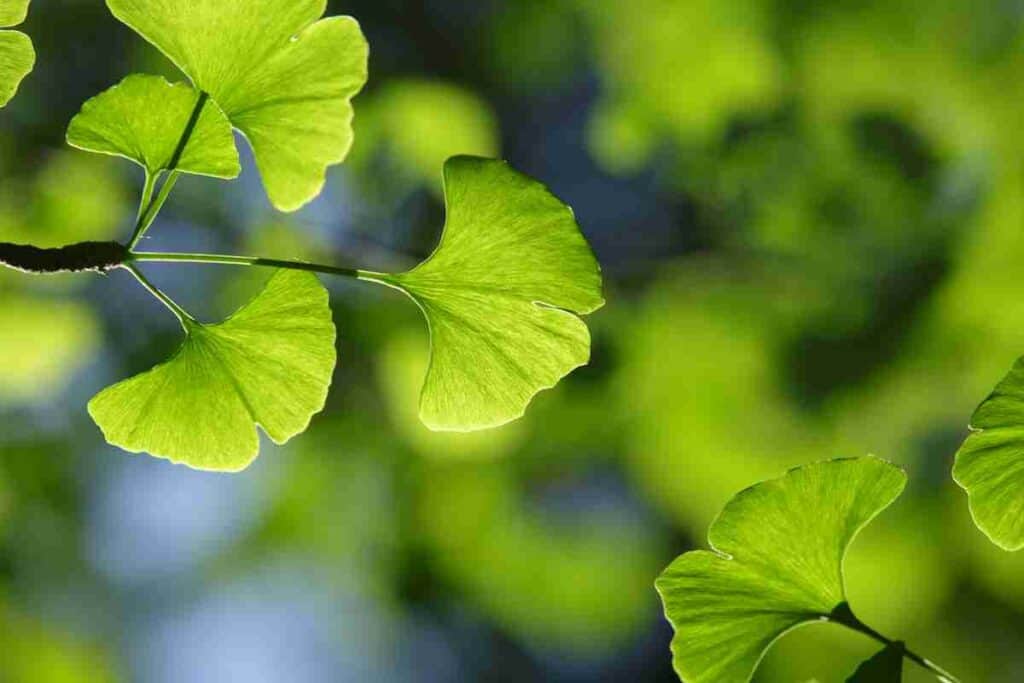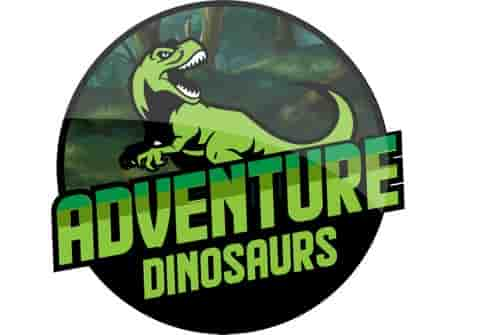North America today comprises the United States, the Dominican Republic, Canada, Mexico, Jamaica, and many other countries and territories. Yet once upon a time, North America as we know it looked very different, as dinosaurs dominated it. What kind of habitats did dinosaurs live in?
In general, the dinosaur habitats of North America were desert plains, while others were mixed forests with perhaps some mountain ranges. There were also coastal regions. The climate was more humid and sub-tropical depending on the period, especially after the continents shifted during the Cretaceous Period.
This article will examine the different habitats of North American dinosaurs that lived during the Jurassic and Cretaceous Periods. I’ll also discuss some of the most important North American fossil sites that have helped us understand more about the dinosaurs that roamed here millions of years ago.
Let’s begin!
North American Habitats During the Jurassic Period
The Jurassic Period occurred approximately 201.3 million years back after the Triassic Period. By this time, the Central Atlantic Magmatic Province, an igneous province that cut into North America, had erupted.
It caused many terrestrial vertebrates, marine vertebrates, and marine invertebrates to go extinct. Also notable during the Jurassic Period was how Pangea was separating. The resulting landmasses were southern Gondwana and northern Laurasia. The latter, Laurasia, was part of what is today’s North America.

Since Pangea was still one landmass, the climate and environment between Laurasia and Gondwana were believed to be similar.
The Jurassic was a warm time, and any ice caps in the area were gone. Most of the land was forests and deserts. The forests would grow to Pangea’s poles. In areas of lower latitude were the deserts, which would have been especially warm. (Source)
Here is an overview of the flora that grew in Pangea during the Jurassic Period.
Cycads
Although experts have declared the Mesozoic Era to be the Age of the Cycads, cycads were diversifying from the Jurassic into the Cretaceous Periods. That said, these cycads looked a lot like Bennettitales, so that they could have been confused with one another.
Bennettitales
Bennettitales were the most diversified during the Triassic into the Jurassic. Most Bennettitales were tiny trees and shrubs in the Williamsoniaceae order. It’s thought that acrocerid flies and kalligrammatid lacewings – neither of which exist anymore – could have pollinated the flowers of Bennettitales.
Ginkgoales
The Gingko biloba might be all we have of ginkgoales now, but during the Jurassic Period, these plants were everywhere. Able to withstand a variety of climates, the ginkgoalean samples found in Jurassic rocks include the Karkenia, Nagrenia, Greanna, and the Yimaia.
Conifers
As the Jurassic Period got underway, conifers continued the diversification process as started during the Late Triassic. These trees likely would have populated the forests across what would become today’s North America.
The Araucaria genus, which still exists to this day, might have begun through the Arucarian conifers of the Jurassic. The Cheirolepidiaceae plant family, which has since gone extinct, was also common at this time, as were Podozamites, a type of deciduous conifer with sizable leaves. (Source)
North American Jurassic Period Dinosaurs
Which dinosaurs called this part of North America home during the Jurassic Period? Here’s a smattering of them:
- Anchisaurus
- Apatosaurus
- Barosaurus
- Brachiosaurus
- Brontosaurus
- Ceratosaurus
- Diplodocus
- Epanterias
- Galeamopus
- Hesperosaurus
- Kaatedocus
- Koparion
- Marshosaurus
- Nanosaurus
- Palaeopteryx
- Sarahsaurus
- Stegosaurus
- Tichosteus
- Uteodon
The Differences in Climate, Vegetation, and Landscape During the Cretaceous Period
Following the Jurassic Period was the Cretaceous Period, which was about 145 million years ago. It was the last period in the Mesozoic Era and lasted 80 million years. That makes it the longest period of the Phanerozoic and the Mesozoic.
The forests still grew out to the land’s poles, and no ice caps existed. Fauna was developing, as were birds and mammals.
Most importantly, Pangea was fully separating throughout the Cretaceous, with the split of Gondwana and Laurasia complete by the time this period ended. That gave way to the development of the Indian and South Atlantic Oceans.
The area that is today’s North America was further split by the Western Interior Seaway. It led to the formation of eastern Appalachia and western Laramidia.
What were the climate, vegetation, and landscape like in these North American areas during the Cretaceous Period? Let’s take a closer look.
Climate and Landscape
The warm weather that began in the Jurassic did not decrease by the Cretaceous Period. Based on what we know about fossils found in the Appalachian, especially those from modern-day Rhode Island and Massachusetts, the weather in this part of North America was paratropical and sub-humid.
Although less is known about Laramidia’s climate, the Cretaceous Period was continually warm like the Jurassic was before it. The higher the latitudes, the greater the propensity for snowfall, which could have affected parts of the split North American landmass.
The tropics were very wet, even more so than in the Jurassic and especially the Triassic. Volcanos around the area released carbon dioxide, which could have led to warmer temps.
Vegetation
The vegetation of the Appalachian included a variety of plants. We know for certain, based on fossils recovered around Maryland and Delaware, that angiosperms, gymnosperms, and ferns were common.
Minnesota fossils tell us that pomegranates, tulip trees, poplars, redwoods, willows, ferns, laurels, evergreens, cycads, and vascular plants called Equisetum also existed at the time.
In Georgia, some of the plants recovered include the following:
- Rhamnaceae
- Magnoliaceae
- Cupressaceae
- Torreya
- Salicaceae
- Ranunculales
- Cinnamomum
- Ericaceae
- Malpighiales
- Pinophyta
- Moraceae
- Sequoioideae
- Lauraceae
As some of those names should tell you, certain plant species at the time live on today as cinnamon, magnolia flowers, and buttercups. In all, 63 different plant species were uncovered in Georgia.
North American Cretaceous Period Dinosaurs
The number of dinosaur species living between Appalachia and Laramidia was huge. While we can’t possibly list them all, here are some of the more significant ones:
- Acheroraptor
- Agathaumas
- Ankylosaurus
- Apatoraptor
- Appalachiosaurus
- Astrodon
- Aublysodon
- Bravoceratops
- Brontomerus
- Caenagnathus
- Capitalsaurus
- Ceratops
- Cionodon
- Clarohynchus
- Coleosaurus
- Deinodon
- Diclonius
- Diplotomodon
- Dracorex
- Dysganus
- Edmontosaurus
- Glishades
- Hierosaurus
- Hypsibema
- Invictarx
- Laosaurus
- Magulodon
- Microcephale
- Monoclonius
- Nanontyrannus
- Orcomimus
- Paleoscincus
- Paronychodon
- Pectinodon
- Polyodontosaurus
- Polyonax
- Pteropelyx
- Rubeosaurus
- Stephanosaurus
- Thespesius
- Trachodon
- Troodon
Key Fossil Sites That Indicate Dinosaur Habitats in North America
We’re fortunate to know as much as we do about North American dinosaurs in the Jurassic and Cretaceous Periods, thanks to paleontologists uncovering fossils. Here are some fossil sites that have been instrumental in shaping the landscape of the time. (Source)
Morrison Formation
For finding North American dinosaur remains that lived during the Upper Jurassic, the Morrison Formation is among the most important fossil sites. The fossils uncovered here have been surprisingly fertile, more so than any other North American site.
The Morrison Formation is mostly in Colorado and Wyoming, with parts extending to Idaho, Utah, Arizona, New Mexico, Texas, Oklahoma, Kansas, Nebraska, South Dakota, North Dakota, and Montana. The area is 600,000 square miles in all; however, paleontologists have not been able to access the Morrison Formation in its entirety to this day. (Source)
Even still, all nature of insects, turtles, mammaliaforms, snakes, lizards, fish, and amphibians have been uncovered. The range of dinosaurs that lived in this part of North America encompasses everything from theropods to sauropods and ornithischians. In Utah, whole dinosaur eggs have been recovered, although we don’t know more about the findings than that.
Ellisdale Fossil Site
The Ellisdale Fossil Site in Monmouth, New Jersey, is the home to two Late Cretaceous specimens, the Parissa neocesariensis, a type of salamander, and the Proteus stageri, a teiid lizard. Dinosaur species such as Tyrannosauroidea, Appalachiosaurus, and Dryptosaurus have been uncovered here as well.
Bone Cabin Quarry
The Bone Cabin Quarry near Laramie, Wyoming, has led to the unearthing of Jurassic fossils, although only fragments. These were recovered in 1897 by paleontologist Walter Granger. From 1898 through 1905, the area was excavated, and more dinosaurs were discovered.
We can say for sure that Gargoyleosaurus, Apatosaurus, Allosaurus, and Stegosaurus likely lived in this part of North America. (Source)
Cedar Mountain Formation
The last key fossil area we want to talk about is Cedar Mountain Formation in Emery County, Utah. Many of the same dinosaur species recovered at Bone Cabin Quarry were found at Cedar Mountain Formation as well, likely due to proximity.
That said, fossils of mammaliaforms, cartilaginous fish, bony fish, amphibians, turtles, and reptiles like Lepidosaurus and Crurotarsans help us further put together the pieces of which creatures lived between the Jurassic and Cretaceous Periods.
Conclusion
The habitats of North American dinosaurs changed over the millions of years the various species lived and as Pangea separated. The mostly forested regions of North America led to developing some fauna that still lives on today.
Through such fossil sites as the Morrison Formation, we’re fortunate to be able to know a lot about the dinosaurs that existed at the time!
